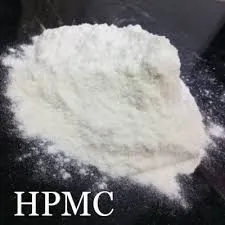
Nov . 29, 2024 14:36 Back to list
Hydroxyethyl Cellulose as a Versatile Thickening Agent in Various Applications
Understanding Hydroxyethyl Cellulose Thickener Applications and Benefits
Hydroxyethyl cellulose (HEC) is a nonionic cellulose ether widely employed as a thickening agent in various industries. In this article, we will explore the characteristics, applications, and benefits of HEC, highlighting its significance as a versatile thickener.
What is Hydroxyethyl Cellulose?
Hydroxyethyl cellulose is derived from naturally occurring cellulose, which is a polysaccharide found in plants. The production process involves etherifying cellulose with ethylene oxide, resulting in a water-soluble, thickening agent that displays excellent compatibility with numerous substances. HEC is characterized by its ability to enhance viscosity and modify the properties of different formulations without significantly altering their pH levels.
This compound is a white, odorless powder, creating gel-like textures when dissolved in water. Its neutral nature makes it an appealing choice across various applications, from cosmetics and personal care products to pharmaceuticals and industrial formulations.
Applications of Hydroxyethyl Cellulose
1. Cosmetics and Personal Care Products HEC is widely used in the cosmetic industry for its thickening, stabilizing, and emulsifying properties. Products such as shampoos, conditioners, lotions, and creams benefit from HEC due to enhanced texture and improved sensory attributes. It helps maintain the homogeneity of emulsions, providing a smooth application experience.
2. Pharmaceuticals In the pharmaceutical sector, HEC is used as an excipient in ointments, gels, and creams. It can act as a binder in tablet formulations and provides desired viscosity levels in liquid medications. HEC’s ability to hydrate the skin also makes it useful in dermatological applications, contributing both to therapeutic effects and consumer satisfaction.
3. Food Industry Although less common than other thickeners, HEC has found its place in the food industry as a food additive. It acts as a thickener and stabilizer in sauces, dressings, and various prepared foods. Its use in food formulations ensures consistent texture and improved shelf-life by preventing ingredients from separating.
4. Construction and Coatings HEC is utilized in construction materials such as paints, plaster, and cement products. Its thickening properties help improve the application and performance of these materials while providing stability and preventing sedimentation. In coatings, HEC can contribute to better spreadability and adherence, enhancing the overall finish.
hydroxyethyl cellulose thickener

5. Industrial Applications Beyond consumer products, HEC is also employed in various industrial processes, including paper production and textile finishing. Its ability to provide consistency and improve the handling and mixing of viscous materials makes it a valuable addition to many formulations.
Benefits of Hydroxyethyl Cellulose
1. Versatility One of the primary advantages of HEC is its versatility. It can be tailored for various applications by adjusting its molecular weight and degree of substitution. This adaptability allows formulators to achieve specific thickness and texture requirements across multiple industries.
2. Stability HEC provides excellent stability across a wide range of pH environments. Its nonionic nature means it is less likely to interact negatively with other ingredients, making it a reliable choice for sensitive formulations.
3. Safety and Biocompatibility As a derivative of cellulose, HEC is generally recognized as safe (GRAS) for use in food and personal care products. Its biocompatibility supports its use in pharmaceuticals and cosmetics, minimizing the risk of adverse skin reactions.
4. Environmental Considerations HEC is derived from renewable sources, aligning with increasing consumer demand for sustainable and eco-friendly products. Its biodegradable nature further enhances its appeal, particularly in environmentally conscious formulations.
5. Enhanced Performance Products formulated with HEC often exhibit improved viscosity, stability, and application properties. This leads to greater consumer satisfaction, as users can enjoy smoother, more luxurious experiences in products like lotions, gels, and coatings.
Conclusion
Hydroxyethyl cellulose thickener is an indispensable ingredient across numerous industries, valued for its versatility, stability, and performance-enhancing characteristics. As the demand for high-quality products continues to grow, HEC is likely to remain a staple in formulations that prioritize both quality and safety. Understanding and utilizing HEC effectively can lead to remarkable results, improving product experience and user satisfaction. Whether in cosmetics, pharmaceuticals, or industrial applications, HEC proves itself as a critical component in modern formulations.
-
Versatile Hpmc Uses in Different Industries
NewsJun.19,2025
-
Redispersible Powder's Role in Enhancing Durability of Construction Products
NewsJun.19,2025
-
Hydroxyethyl Cellulose Applications Driving Green Industrial Processes
NewsJun.19,2025
-
Exploring Different Redispersible Polymer Powder
NewsJun.19,2025
-
Choosing the Right Mortar Bonding Agent
NewsJun.19,2025
-
Applications and Significance of China Hpmc in Modern Industries
NewsJun.19,2025







